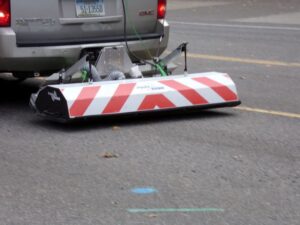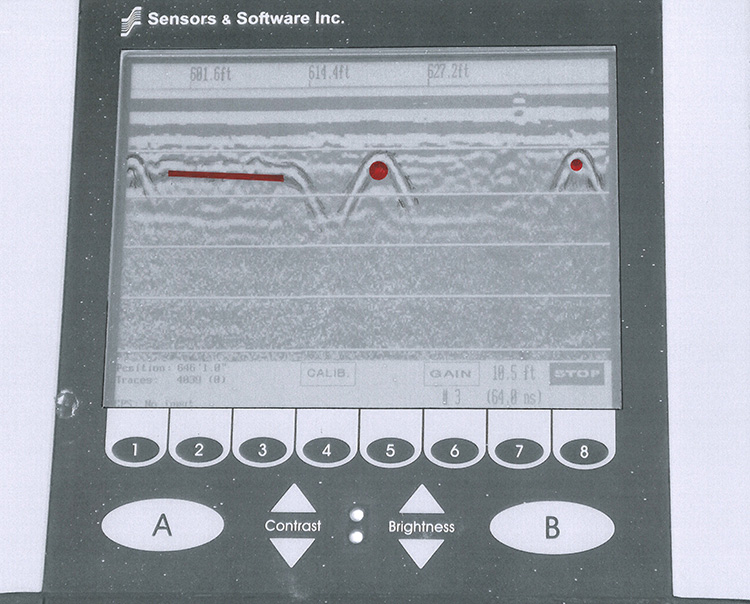The actual image you will see on the screen is a hyperbola, an image that resembles an upward shooting comet. That is not what most people would expect. We expect to see the utility – a pipe – a cable – a conduit – something round. Yet, that is what we are seeing, but we are only seeing the very top of that pipe/cable, the very top of that “comet”. The image shows a widening flare because of the weakness of a radar signal. GPR is not exactly like standard radar, but it is a reflection of radar waves, and remember, a person watching a radar screen does not ever see the shape of the airplane, only a blip on the screen.
GPR is actually a little more distinctive because we can see that rounded portion at the top of the hyperbola, and that does tell us that what we are detecting is a round object. Flatter objects such as a duct run with concrete on top, will show a flatter image on the screen.
While GPR can detect any pipe material, some are better than others. Clay pipe in clay soil may not have enough differentiation as AC pipe. Though of course in very clay type soil, you will be less likely to detect any pipe.
Metal pipe is the one that really stands out. The radar waves can penetrate all types of material, but not metal. When passing over a metal pipe almost 100 % of the signal will be reflected back to the GPR unit. This tends to produce a very solid hyperbola. This is true with iron, steel, or even lead pipe.
On the other hand, plastic pipe is easily penetrated and the signal reflects inside of the lower portion of the pipe just as it does with the top portion. The result is what appears like an echo image on the screen. Besides the top hyperbola, there will often be additional hyperbolas one directly on top of the other, though fainter than the top hyperbola, and the entire image will probably be slightly fainter than it would be if it were steel.
So, metal pipe usually produces a more solid image, while poly pipe usually produces an echo image. This is also dependent on depth, so the deeper the pipe, the less likely the material differences will show.
A common image on the screen which is usually misinterpreted is a very wide circular shape. This is not a hyperbolic shape, but a true half circle, and usually extends from one side of the screen to the other. There have been utility pipes constructed of an enormous size, but those are rare. When you see that circular shape across the screen, do not think that you have just come across a 30-foot diameter pipe. Look up instead of down. You are almost certainly crossing under a metal canopy of some kind or even a tree canopy. This can also happen when the only thing above you is a traffic signal post with the regular extended arm. One way or another, there is something above you that is causing this phenomenon. It is impossible to force radar waves downward with absolute completeness. Some of those radar waves will always be going upward, and when they hit an upper object, they will return downward, and register on the instrument in a wide circular pattern.










